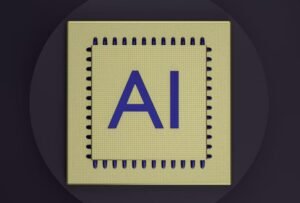Judicial Branch
The judicial branch is one of the three branches of government in the United States, alongside the executive and legislative branches. Its main function is to interpret and apply the law, ensuring justice is served and constitutional rights are protected.
Key Takeaways:
- The judicial branch interprets and applies the law.
- It ensures justice and protects constitutional rights.
The judicial branch is composed of various federal and state courts, each playing a specific role in the legal system. At the federal level, the Supreme Court is the highest authority and has the power to review and overturn decisions made by lower courts. State courts, on the other hand, handle cases related to state laws and regulations. Both federal and state judges are appointed or elected, depending on the jurisdiction.
The Supreme Court, consisting of nine justices, is the final interpreter of the Constitution and has the power of judicial review.
The Structure of the Judicial Branch
The structure of the judicial branch consists of several levels of courts. At the federal level, these include:
- The Supreme Court
- Circuit Courts of Appeal – 13 in total
- District Courts – 94 in total
State courts, on the other hand, have a similar structure with a few variations, depending on the state. The highest state court often mirrors the function of the Supreme Court at the federal level. The two main types of state courts are trial courts, which handle initial cases, and appellate courts, which review decisions made by lower courts.
| Court Level | Number of Courts |
|---|---|
| Supreme Court | 1 |
| Circuit Courts of Appeal | 13 |
| District Courts | 94 |
Judicial Branch Powers
The powers of the judicial branch are crucial for maintaining the system of checks and balances in the government. Some key powers include:
- Judicial Review – The ability to review and declare laws unconstitutional.
- Interpreting Laws – Deciding the meaning and application of laws.
- Adjudicating Disputes – Resolving conflicts between individuals, businesses, or the government.
Judicial review acts as a constitutional safeguard, ensuring the other branches of government do not exceed their authority.
Judicial Branch and the Supreme Court
The Supreme Court is an integral part of the judicial branch and holds significant power. Some notable functions and responsibilities of the Supreme Court include:
- Reviewing Appeals – The Supreme Court evaluates appeals from lower courts seeking a review of their decisions.
- Deciding on Constitutionality – The Court determines whether laws or governmental actions align with the Constitution.
- Setting Precedents – Supreme Court decisions establish legal precedents that guide future cases.
The Supreme Court’s decisions have a lasting impact on society and shape the interpretation of the law.
| Supreme Court Chief Justices | Years Served |
|---|---|
| John Jay | 1789-1795 |
| John Marshall | 1801-1835 |
| Earl Warren | 1953-1969 |
The judicial branch, with its independent decision-making powers, ensures a fair and impartial judicial system. It serves as a vital pillar of democracy by safeguarding individual rights and preserving the principles of justice, making it an essential component in the functioning of the government.
Common Misconceptions
The Judicial Branch
Despite being a crucial element of the government’s system of checks and balances, the judicial branch often faces various misconceptions. These misconceptions can skew people’s understanding of the judiciary’s role and its impact on society. It is important to debunk these misconceptions to foster a more informed and accurate perception of the judicial branch.
Bullet Points:
- The judicial branch is not involved in creating laws
- The judiciary does not favor one political party over another
- The Supreme Court does not have unlimited power
One common misconception is that the judicial branch actively participates in creating laws. However, this is not accurate. The primary responsibility of the judicial branch is to interpret and apply the laws created by the legislative branch. The judiciary may clarify ambiguous laws or settle disputes regarding their interpretation, but it does not have the authority to create new legislation.
Bullet Points:
- The judicial branch is not involved in creating laws
- The judiciary does not favor one political party over another
- The Supreme Court does not have unlimited power
Another misconception is that the judicial branch favors one political party over another. This belief may arise due to controversial or high-profile cases where the court’s decisions align with one party’s interests. However, the judicial branch is designed to be impartial and independent, ensuring fair and just treatment for all. Judges are expected to interpret the law objectively and without bias, regardless of their personal beliefs or political affiliations.
Bullet Points:
- The judicial branch is not involved in creating laws
- The judiciary does not favor one political party over another
- The Supreme Court does not have unlimited power
Contrary to popular belief, the Supreme Court does not possess unlimited power. Though the Court is the highest court in the land, its authority is limited to interpreting the constitution and federal laws. The Supreme Court cannot initiate legislation, enforce its own rulings, or override decisions made by lower courts. Its role is to provide final adjudication on legal matters and ensure the constitutionality of laws and government actions.
Bullet Points:
- The judicial branch is not involved in creating laws
- The judiciary does not favor one political party over another
- The Supreme Court does not have unlimited power
In conclusion, it is crucial to address the common misconceptions surrounding the judicial branch. Understanding the true role and limitations of the judiciary is vital for a well-informed citizenry. By debunking these misconceptions, we can foster a more accurate and nuanced perception of the judicial branch’s crucial role in our democratic society.
The Appointment Process of Supreme Court Justices
The table below illustrates the appointment process of Supreme Court justices in the United States, highlighting the number of justices appointed by each president throughout history. This data provides insights into the impact different presidents have had on shaping the Supreme Court.
| President | Number of Justices Appointed |
|---|---|
| George Washington | 4 |
| Thomas Jefferson | 5 |
| Abraham Lincoln | 5 |
| Franklin D. Roosevelt | 9 |
| Barack Obama | 2 |
| Donald Trump | 3 |
Landmark Supreme Court Cases
Throughout history, the Supreme Court has decided numerous landmark cases that have shaped the legal landscape in the United States. The table below highlights some of the most influential Supreme Court cases, shedding light on their significance and outcomes.
| Case | Year | Significance |
|---|---|---|
| Brown v. Board of Education | 1954 | Ended racial segregation in public schools |
| Roe v. Wade | 1973 | Established a woman’s legal right to abortion |
| Marbury v. Madison | 1803 | Established the power of judicial review |
| Citizens United v. FEC | 2010 | Allowed unlimited independent political expenditures by corporations |
Judicial Independence Index by Country
In order to assess the level of judicial independence across different countries, the Judicial Independence Index measures various factors. The table below presents the index scores of select countries, showcasing their commitment to upholding an independent judiciary.
| Country | Judicial Independence Index Score |
|---|---|
| Sweden | 0.82 |
| United States | 0.71 |
| Japan | 0.62 |
| Russia | 0.32 |
Supreme Court Justices by Gender
Over the years, the gender composition of the Supreme Court has evolved. The table below shows the number of male and female justices who have served on the Supreme Court, highlighting the progress made towards achieving gender balance.
| Gender | Number of Justices |
|---|---|
| Male | 114 |
| Female | 4 |
Landmark Supreme Court Decisions by Decade
The Supreme Court has, throughout different decades, made significant decisions that have shaped the course of American jurisprudence. The table below displays some of these landmark decisions, providing insights into the key legal issues addressed during each decade.
| Decade | Landmark Decisions |
|---|---|
| 1950s | Brown v. Board of Education |
| 1970s | Roe v. Wade |
| 1800s | Marbury v. Madison |
| 2010s | Citizens United v. FEC |
Supreme Court Nominee Confirmation Rates
Confirmation rates of Supreme Court nominees can vary depending on many factors, including the political climate and the balance of power. The table below showcases the confirmation rates of nominees throughout different periods, revealing the challenges faced during certain eras.
| Nominee’s President | Confirmation Rate (%) |
|---|---|
| Ronald Reagan | 81 |
| George H. W. Bush | 53 |
| Barack Obama | 88 |
| Donald Trump | 93 |
Public Trust in the Judiciary
Public trust in the judiciary is an essential component of a functioning judicial branch. The table below displays the percentage of individuals who expressed trust in the judiciary in select countries, indicating the level of confidence citizens have in their judiciary systems.
| Country | Percentage of Trust in Judiciary |
|---|---|
| Germany | 77% |
| United States | 63% |
| Brazil | 45% |
| Nigeria | 32% |
Diversity Among Supreme Court Justices
Ensuring diversity on the Supreme Court has become an important aspect of judicial appointments. The table below depicts the racial and ethnic backgrounds of justices who have served on the Supreme Court, highlighting the strides made towards achieving a more diverse bench.
| Race/Ethnicity | Number of Justices |
|---|---|
| White | 110 |
| African American | 3 |
| Hispanic | 2 |
| Asian American | 3 |
Supreme Court Decisions Overturned
The Supreme Court occasionally revisits and overturns its own previous decisions. The table below lists some notable Supreme Court decisions that were overruled, revealing the evolving interpretations of constitutional law over time.
| Case Overturned | Overturned by | Year Overturned |
|---|---|---|
| Plessy v. Ferguson | Brown v. Board of Education | 1954 |
| Bowers v. Hardwick | Lawrence v. Texas | 2003 |
| Minersville School District v. Gobitis | West Virginia State Board of Education v. Barnette | 1943 |
Overall, the article “Judicial Branch” sheds light on various aspects of the judicial system, ranging from the appointment of Supreme Court justices to landmark cases, judicial independence, diversity among justices, and public trust in the judiciary. By exploring these tables and their associated paragraphs, readers can gain a deeper understanding of the intricacies and importance of the judicial branch in the United States and around the world. The data and information presented demonstrate the significance of the courts in shaping the legal landscape and maintaining justice in society.
Article Judicial Branch
Frequently Asked Questions
-
What is the role of the Judicial Branch?
The Judicial Branch is responsible for interpreting laws and ensuring that they are applied fairly. It includes the Supreme Court and other federal and state courts.
-
How is the Supreme Court different from other federal courts?
The Supreme Court is the highest court in the country and has the final authority on issues of federal law. It consists of nine justices who are nominated by the President and confirmed by the Senate.
-
What types of cases does the Judicial Branch handle?
The Judicial Branch handles both criminal and civil cases. Criminal cases involve violations of laws, while civil cases deal with disputes between individuals or organizations.
-
How are federal judges selected?
Federal judges, including Supreme Court justices, are nominated by the President and must be confirmed by the Senate. They serve lifetime appointments.
-
What is the process for appealing a court decision?
The process for appealing a court decision varies depending on the jurisdiction and the type of case. Generally, it involves filing an appeal with a higher court and presenting arguments for why the lower court’s decision was incorrect.
-
What is judicial review?
Judicial review is the power of the courts to review and invalidate laws or government actions that are deemed unconstitutional. This power is derived from the principle of separation of powers.
-
How do courts ensure fair trials?
Courts ensure fair trials by upholding the rights of the accused, including the right to legal representation, the right to present evidence, and the right to a fair and impartial jury. Judges also play a crucial role in ensuring fairness throughout the trial process.
-
What is the significance of landmark Supreme Court cases?
Landmark Supreme Court cases have a profound impact on American society and shape the interpretation of the Constitution. They establish important legal precedents and have the power to change existing laws or policies.
-
How does the Judicial Branch maintain checks and balances?
The Judicial Branch maintains checks and balances by reviewing the constitutionality of laws passed by the legislative branch and actions taken by the executive branch. It ensures that no single branch of government becomes too powerful.
-
Can court decisions be overturned?
Yes, court decisions can be overturned. Higher courts have the power to overrule decisions made by lower courts. Additionally, a court decision can be reversed if new evidence or legal arguments emerge.



